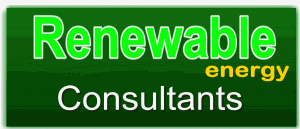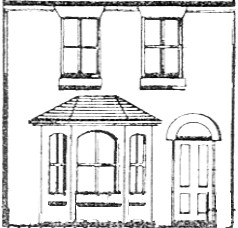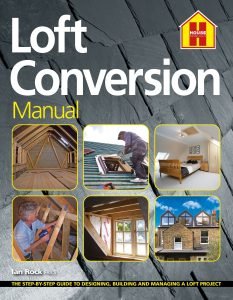Care & Repair
Lime or cement?

Although cement was used in some late Victorian buildings it was not the same cement as we use today (it was still experimental then).
Modern cement is far denser and more impermeable than that used in Victorian buildings; in fact cement if used was in foundations/footings and in floors rather than in the masonry wall construction. Lime for use in building was slaked on site as late as the inter-war period. It was not until the 1930s that cement really took over from lime in general building (this followed the introduction of Building Standards in the 1920s). Therefore when looking at repair of a Victorian building modern cement is inappropriate and can cause problems.
A common problem is the use of dense modern cement mortars that change the way Victorian walls handle moisture. This can lead to spalling (eroding) of the brickwork outer face. This is due to the pointing being blocked by dense cement and moisture having to evaporate through the brick face, thus causing spalling as the salts contained in the moisture crystallize.
It is the pointing of the wall that acts as the lung of the building and clogging it with dense cement suffocates the building. The problem is worse with soft bricks, stone, etc. The pointing should always be softer than the surrounding masonry.
Where there is a cement render on the wall there are invariably a myriad of fine cracks and once water gets behind the render it is trapped. Many damp problems where walls are rendered are due to the impermeable nature of the wall finish. Once again the use of modern cement is the main problem, together with the use of modern masonry paint finishes.
The issue here though is the fact that many home owners attempt DIY and/or employ builders that know nothing but how to use cement. Lime mortar or render is seen as something of a mystery as well as being relatively expensive. Yes, it is more costly, but in the long term if it does not cause the damage that using cement causes it will be cheaper.
What type of lime?
Mixing a bag of hydrated lime with water is said to give you lime putty, but it is a rubbish product and many failures will occur thus giving lime a bad name unnecessarily.
Bagged hydrated lime is best used to gauge cement mixes rather than to create a lime mix.
Pure Lime (called Fat Lime or Lime Putty) is very breathable and flexible. Best used for fine work, etc. Comes in tubs and sets by carbonation taking Carbon Dioxide from the air (not a chemical set like cement) and will not set in water. But it is not highly durable so for many Victorian properties this is not the most appropriate form of lime (other than perhaps for some pointing work or if tuck pointing is needed).
Naturally Hydraulic Lime
Known as ‘NHL’ this is the result of making lime using an impure lime (with clay and earth in it) and it comes in 3 forms:
Feebly hydraulic (NHL 2)
Moderately hydraulic (NHL 3.5)
Eminently hydraulic (NHL 5)
The numbers relate to the compressive strengths. Because these are limes with impurities they have a mix of carbonation and chemical set and therefore come in powdered form. This makes it more like cement and easier for builders to use. However, even NHL 5 is not cement and should not be confused with cement.
If you want a quick set and a durable mix use NHL 5 (e.g. for chimneys, below ground, ridge tiles, etc.)For most work (pointing, rendering, etc) NHL 3.5 would be the one to use.For work requiring high levels of breathability or flexibility NHL 2 or Fat Lime should be used.The mix is easy 1:3, but the sand must be sharp well graded washed sand (building sand is no good as a binder).
For anyone with the appropriate hand skills (most brickies, etc) it is really not difficult and is just a matter of working in a slightly different way. For DIY-ers it is perhaps a more forgiving product than cement and therefore easier to use. NHL is not easy to get in UK – very few producers, but several suppliers. However, in France it is very common and cheap. I would encourage a ‘lime cruise’ instead of a ‘booze cruise’.
It is a myth that lime is for historic buildings only and that it is very difficult to use. It is our firmly held opinion that cement should not be added to the mix, as it does not help.
If we look around at the many buildings constructed in lime and surviving perfectly well after hundreds of years these are testimony to the long term durability of lime mortar in construction when properly looked after.
Tests of different lime mortar mixes
Tests carried out on Cardiff castle have shown that using a magnesium stearate additive reduces penetrating dampness.
The best mix was found to be:-
1 part NHL (3.5 strength) with magnesium stearate
2 parts sand and limestone blend (1:1).
Magnesium stearate is 0.25% of binder by weight, which is the same proportion as St. Astier ‘Eco-Mortar’.
Test results represented moisture ingress via driving rain for 120 minutes.
Lime plaster
Regarding internal work, again lime plaster is best. For some patch repairs something like Polyfilla can be used for fine cracks, modern renovating plaster is OK, but not ideal.
Laths are expensive and Expanded Metal Lath is not ideal. Overboarding with plasterboard may be an option if there are no cornices etc. However, there is a product around called reedmat (a bit like the reed fencing you get in garden centres) and this can be used very effectively used for repairing lath and plaster and it is much cheaper than laths.
















